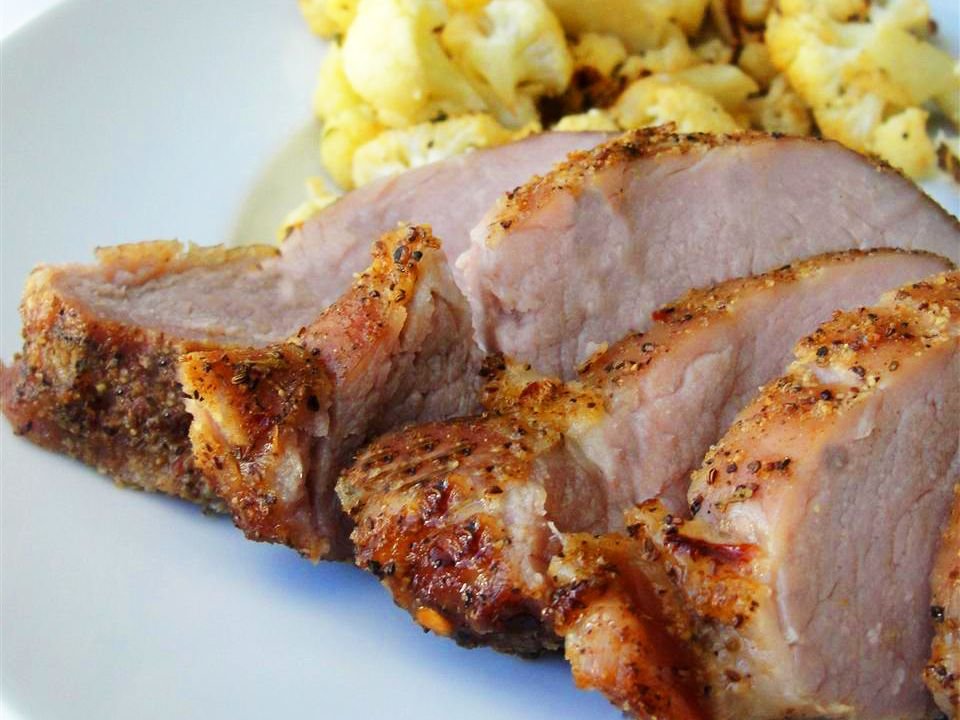The Perfect Roast Pork Loin
There’s something undeniably comforting about a perfectly roasted pork loin. The succulent meat, infused with fragrant herbs and garlic, emerges from the oven glistening with flavor. This recipe takes a simple approach, using a few key ingredients to create a showstopping centerpiece for any dinner table.
But achieving that ideal balance of juicy tenderness and savory goodness requires more than just tossing a piece of meat in the oven. This blog will be your guide, walking you through every step of the process, from prepping the ingredients to carving the perfect slices.
Aromatic Adventures: The Spice Rub
The journey begins with the creation of a fragrant spice rub. Garlic, the cornerstone of savory flavor, takes center stage. Three cloves, minced to a fine consistency, release their pungent aroma as they mingle with a tablespoon of dried rosemary. Rosemary, with its piney-earthy notes, complements the richness of the pork beautifully.
Salt and pepper, the workhorses of seasoning, round out the basic flavor profile. Using a mortar and pestle is the traditional method for grinding the spices together. The rhythmic pounding not only crushes the ingredients but also releases their essential oils, creating a more potent and well-blended rub.
However, a food processor or even a zip-lock bag with some aggressive pounding will achieve similar results. The key is to transform the spices into a cohesive paste, ready to infuse the pork with flavor.
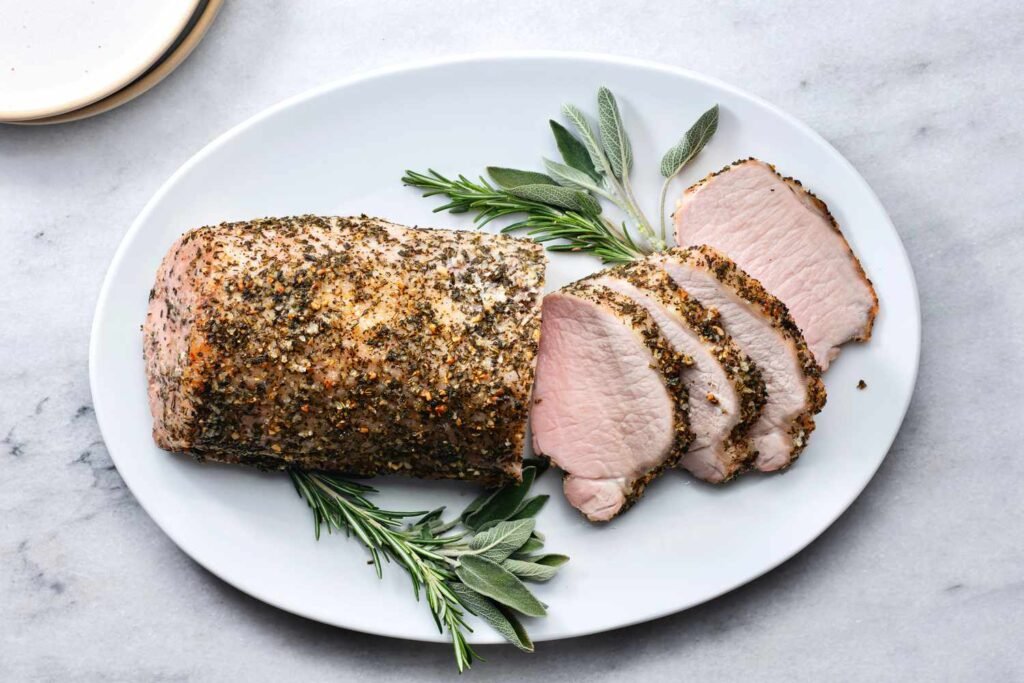
Preparing the Pork Loin
The star of the show, the pork loin roast, takes center stage next. A two-pound boneless roast is ideal, offering enough meat to feed a crowd without being overwhelming.
Before applying the rub, pierce the meat with a sharp knife in several places. This creates pockets for the flavorful paste to penetrate, ensuring every bite is bursting with taste.
Now comes the moment of truth: slathering the fragrant garlic and rosemary paste onto the pork loin. Don’t be shy! Use your hands to massage the paste into every nook and cranny, ensuring the meat is evenly coated.
Finally, a generous drizzle of olive oil adds a touch of richness and helps create a beautiful browned exterior during roasting.
The Roasting Process
With the seasoned pork ready, preheat your oven to 350 degrees Fahrenheit (175 degrees Celsius). This moderate temperature allows the meat to cook slowly and evenly, preventing it from drying out.
Once the oven is nice and hot, transfer the seasoned pork loin to an oven-safe pan. Here, the magic of roasting unfolds. Placing the pork in a preheated pan ensures even browning from the start.
Now comes the part that requires a little patience: the actual roasting. The estimated cook time is 90 minutes to 2 hours, depending on the thickness of the roast.
The key to juicy pork is to avoid overcooking. To ensure perfect doneness, we’ll employ a two-pronged approach: the visual cue and the magic of the thermometer.
Every 30 minutes, baste the pork loin with the pan juices. This not only keeps the meat moist but also helps develop a rich, caramelized crust on the exterior.
As the minutes tick by, the pork will begin to transform. The initially pale flesh will gradually turn a golden brown, and the intoxicating aroma of roasting garlic and rosemary will fill your kitchen.
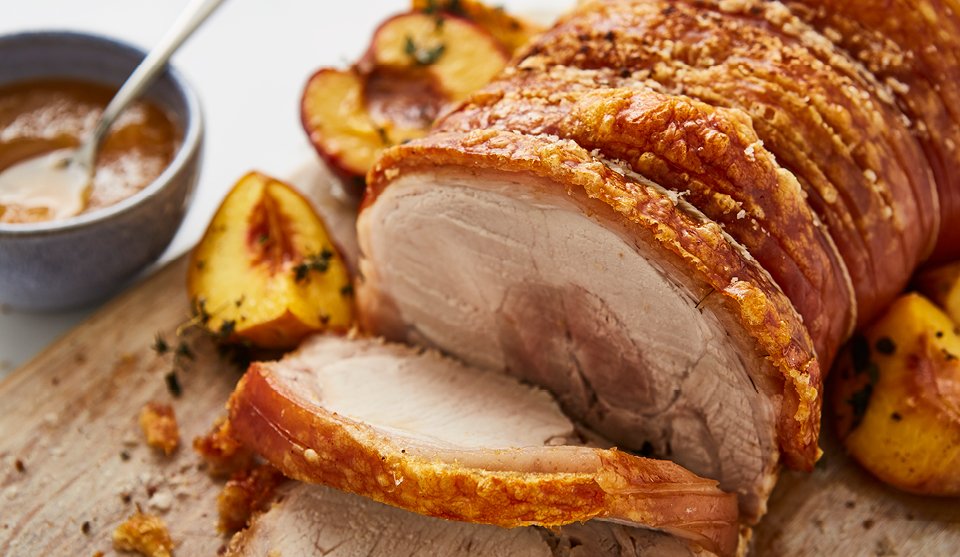
The Science of Doneness: Using a Thermometer
But relying solely on visual cues can be risky. The most reliable way to determine if your pork loin is cooked through is by using an instant-read thermometer.
This handy tool takes the guesswork out of cooking. Insert the thermometer into the thickest part of the pork loin, avoiding any bone.
The perfect internal temperature for pork loin is 145 degrees Fahrenheit (63 degrees Celsius). At this temperature, the meat is cooked through but still retains its juicy tenderness.
If the thermometer reads lower than 145 degrees F, return the pork to the oven and continue roasting for 10-minute intervals, checking the temperature each time.
Once the internal temperature reaches the desired level, remove the roast from the oven and transfer it to a platter. Letting the meat rest for 10 minutes allows the juices to redistribute, resulting in even more flavorful and tender slices.
Deglazing the Pan and Serving
While the pork rests, there’s a little culinary alchemy to be performed on the pan drippings. These browned bits on the bottom of the pan hold immense flavor potential.
Place the pan on the stovetop over medium-high heat. Pour in a half cup of white wine. As the wine simmers, it will loosen the browned bits from the bottom of the pan, creating a rich, flavorful sauce.
Use a spatula to scrape up any stubborn bits, incorporating them into the wine. Let the sauce simmer for 3 to 5 minutes, or until it reduces slightly and thickens.
This pan sauce is the perfect complement to the roasted pork. It adds an extra layer of savory complexity and moisture to each bite.
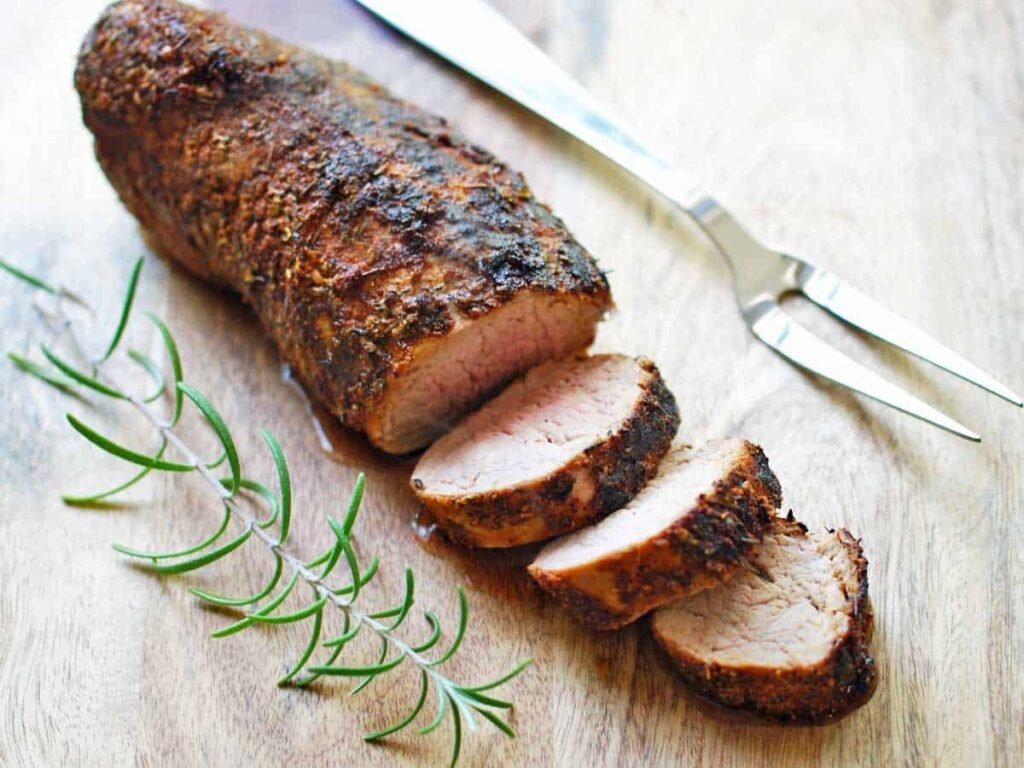
The Art of Carving: Slicing for Perfection
Now comes the moment you’ve been waiting for: carving the pork loin. For this task, a sharp carving knife is essential.
Tent the pork loin loosely with foil while it rests. This helps trap the heat and prevents the exterior from drying out.
Once the resting period is over, remove the foil and place the roast on a cutting board. With a steady hand, begin slicing the pork loin against the grain. Thin slices are ideal, ensuring maximum tenderness and flavor distribution.
Presentation and Plating: A Feast for the Eyes
Arrange the sliced pork loin on a platter. Spoon the pan sauce generously over the top, allowing it to cascade down the sides. For a touch of visual appeal, you can garnish the dish with fresh rosemary sprigs or chopped parsley.
Now comes the best part: serving! Accompany the roasted pork loin with a variety of sides to complete the meal. Roasted vegetables, mashed potatoes, or a simple green salad all pair beautifully with the savory flavors of the pork.
Beyond the Basics: Variations and Tips
This recipe provides a solid foundation for a delicious roast pork loin. But feel free to experiment and personalize it to your taste. Here are a few ideas:
- Spice it Up: For a bolder flavor profile, add a pinch of red pepper flakes to the spice rub.
- Herb Garden Inspiration: Rosemary isn’t the only herb that complements pork. Try substituting thyme, sage, or a combination of your favorites.
- Fruity Twist: Instead of white wine, deglaze the pan with apple cider or chicken broth for a slightly sweeter sauce.
- Vegetable Medley: Roast vegetables like potatoes, carrots, and onions alongside the pork loin for a one-pan meal.
- Leftovers Reimagined: Leftover roast pork can be used in a variety of dishes, such as sandwiches, salads, or stir-fries.
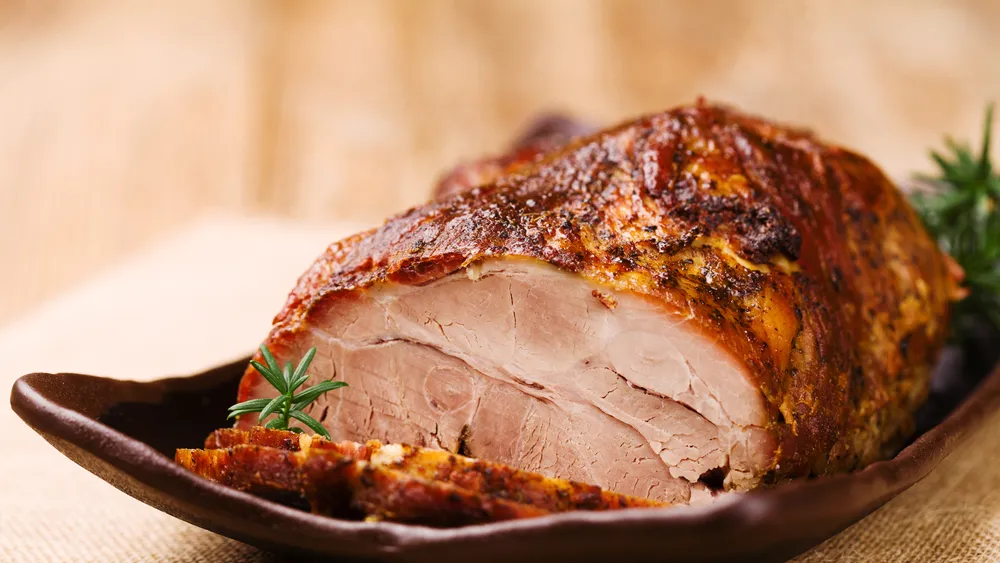
The Final Sizzle: A Culinary Triumph
With a little planning and attention to detail, you can create a showstopping roast pork loin that will leave your guests wanting more. This recipe is a testament to the power of simple ingredients and careful cooking techniques.
So, fire up your oven, gather your ingredients, and embark on this culinary journey. The reward? A succulent, flavorful roast pork loin that’s sure to become a new favorite in your recipe repertoire.
Nutrition Facts (per serving)
| 300 | Calories |
| 21g | Fat |
| 1g | Carbs |
| 23g | Protein |
| Nutrition Facts | |
|---|---|
| Servings Per Recipe 8 | |
| Calories 300 | |
| % Daily Value * | |
| Total Fat 21g | 27% |
| Saturated Fat 6g | 30% |
| Cholesterol 71mg | 24% |
| Sodium 58mg | 3% |
| Total Carbohydrate 1g | 0% |
| Dietary Fiber 0g | 1% |
| Protein 23g | 45% |
| Vitamin C 1mg | 1% |
| Calcium 29mg | 2% |
| Iron 1mg | 6% |
| Potassium 428mg | 9% |
* Percent Daily Values are based on a 2,000 calorie diet. Your daily values may be higher or lower depending on your calorie needs.
** Nutrient information is not available for all ingredients. Amount is based on available nutrient data.
(-) Information is not currently available for this nutrient. If you are following a medically restrictive diet, please consult your doctor or registered dietitian before preparing this recipe for personal consumption.
Powered by the ESHA Research Database © 2018, ESHA Research, Inc. All Rights Reserved

